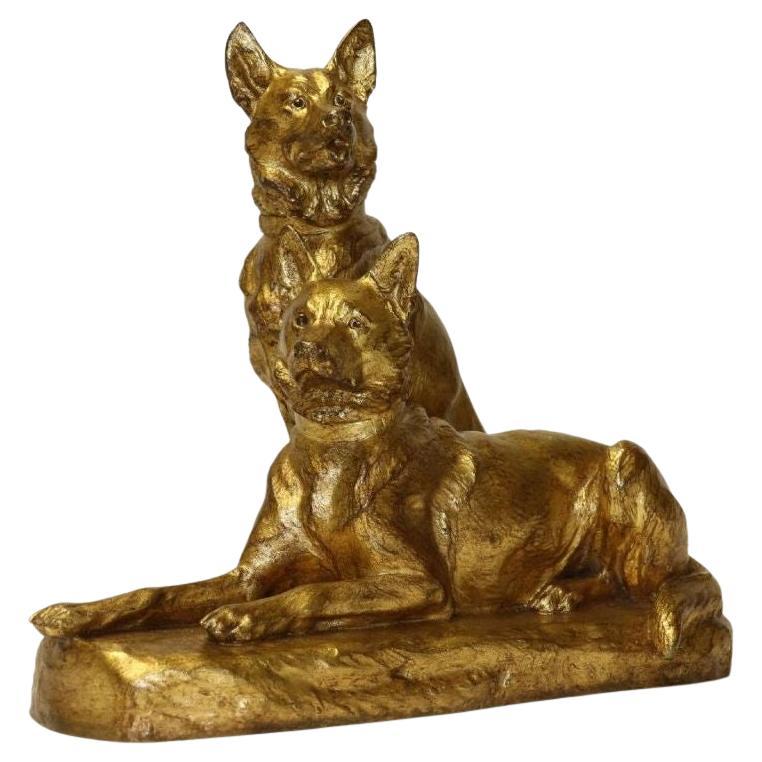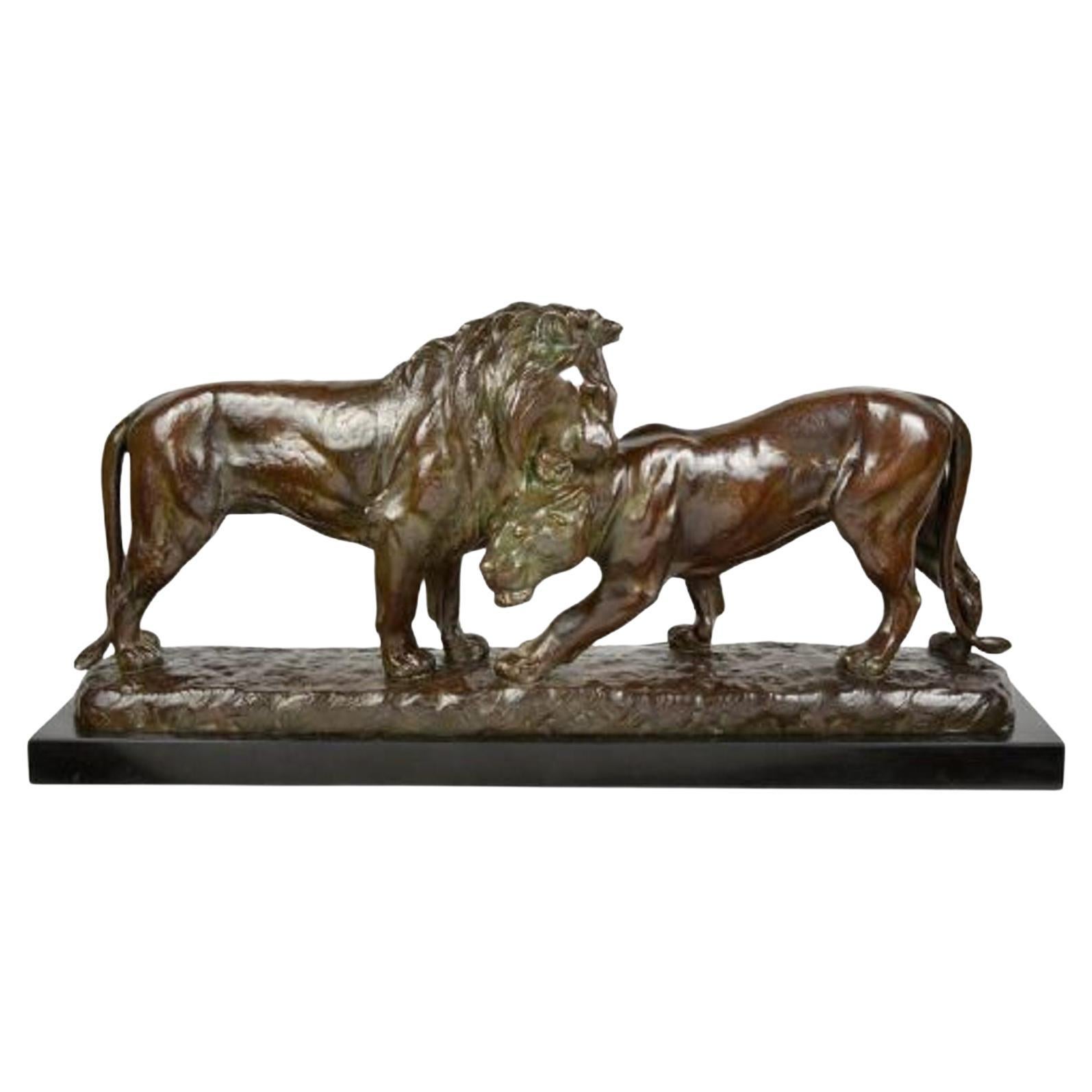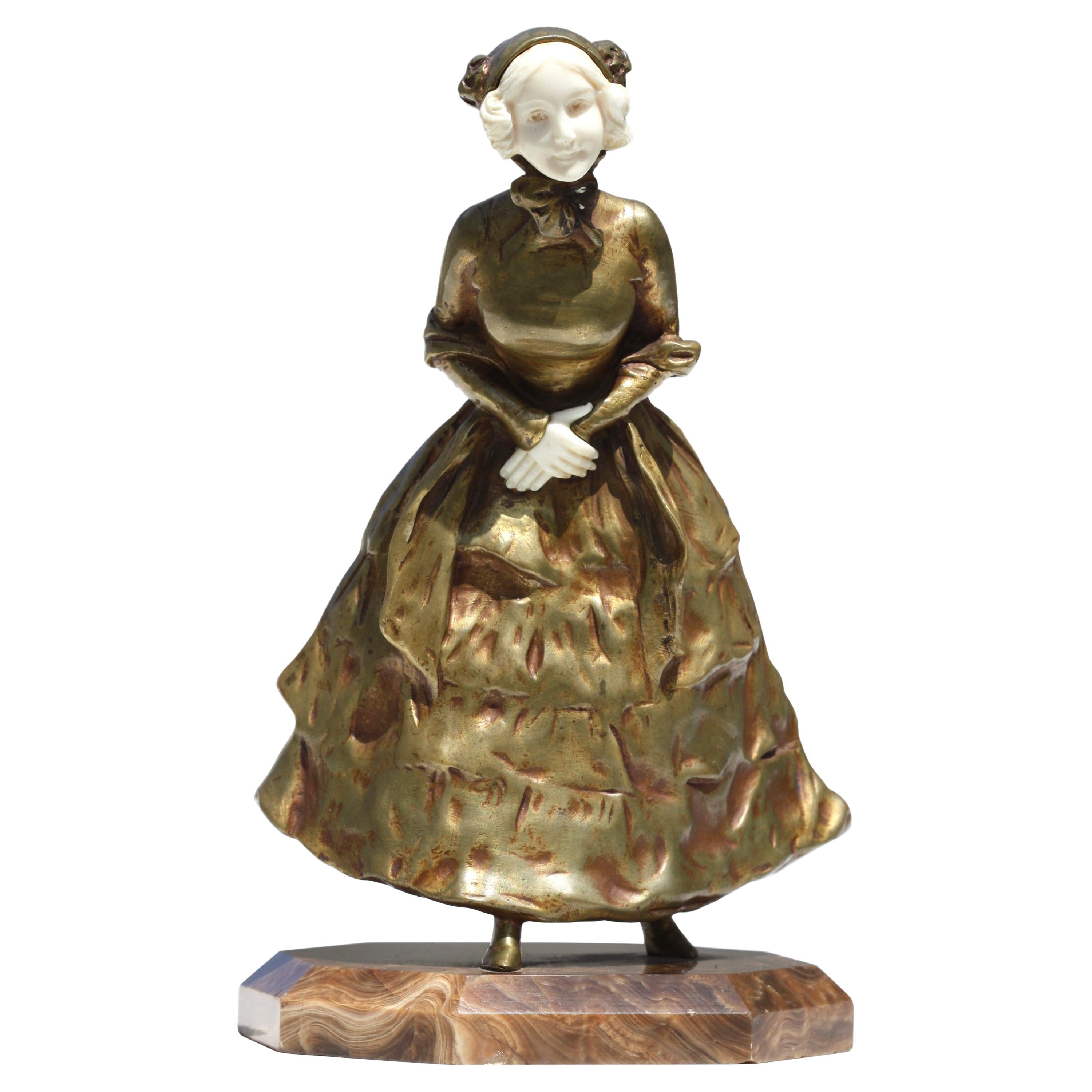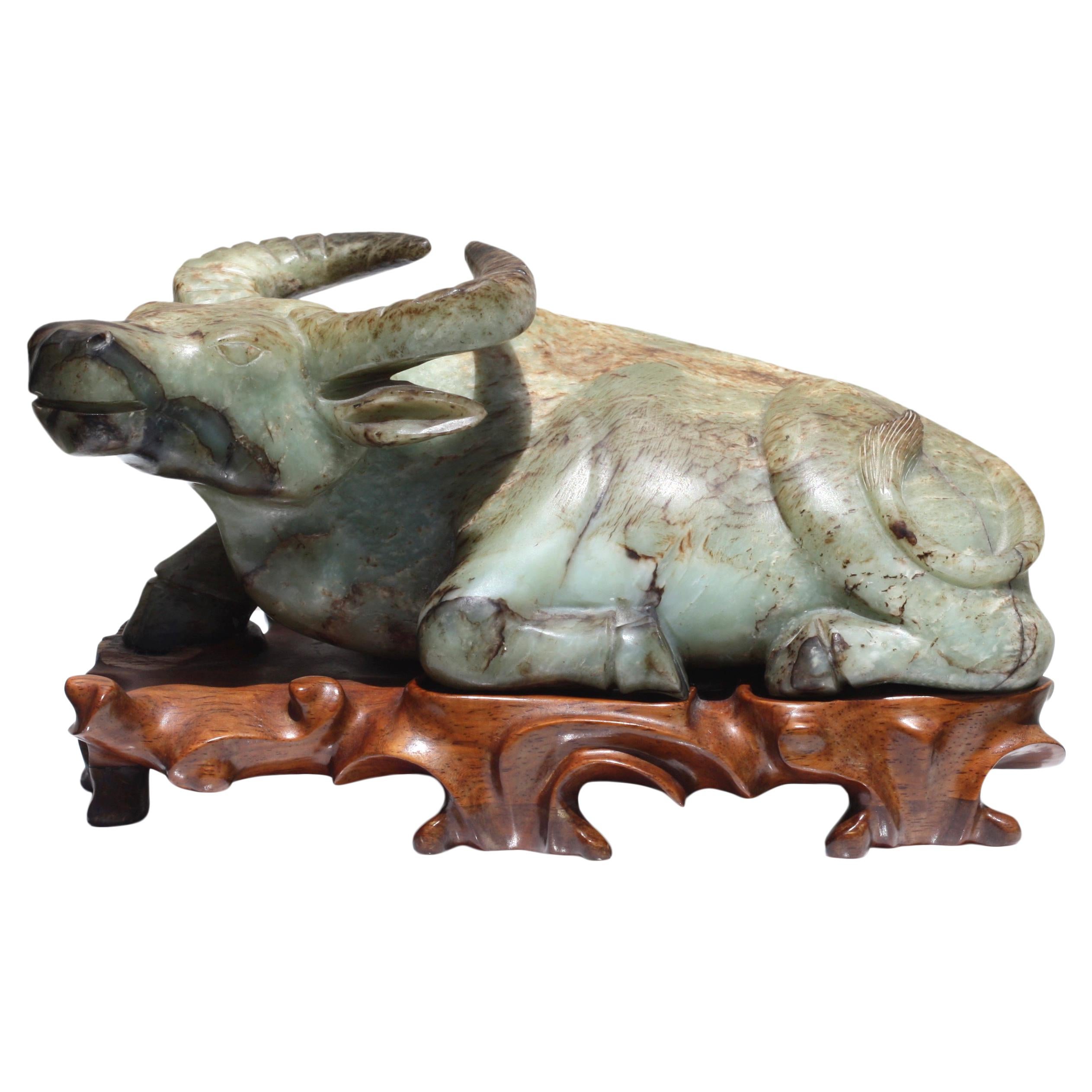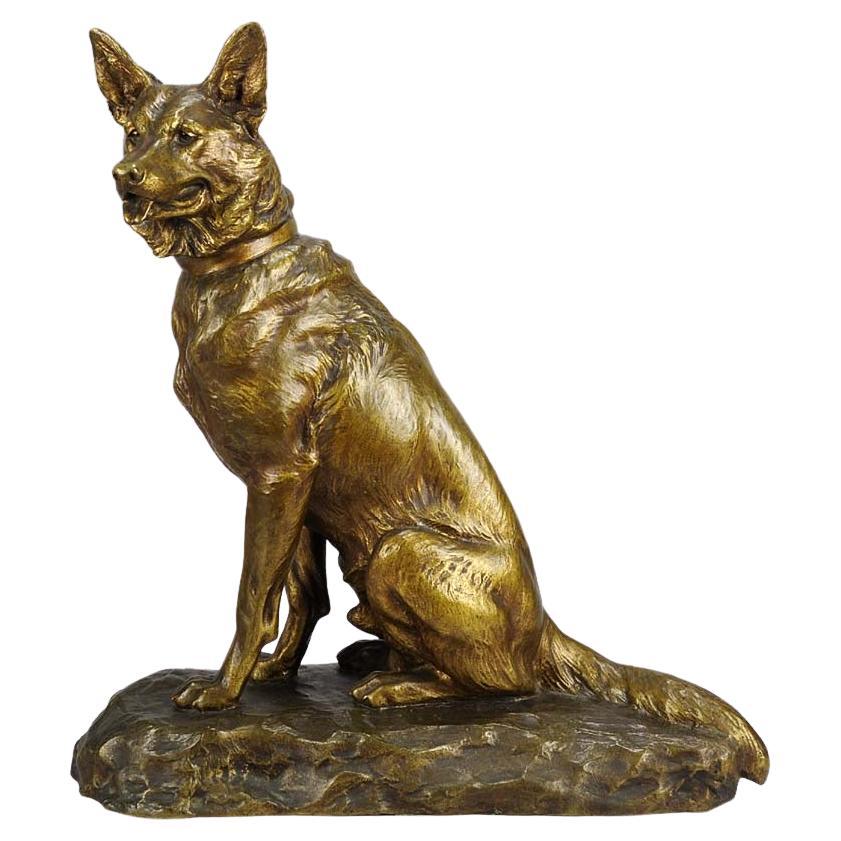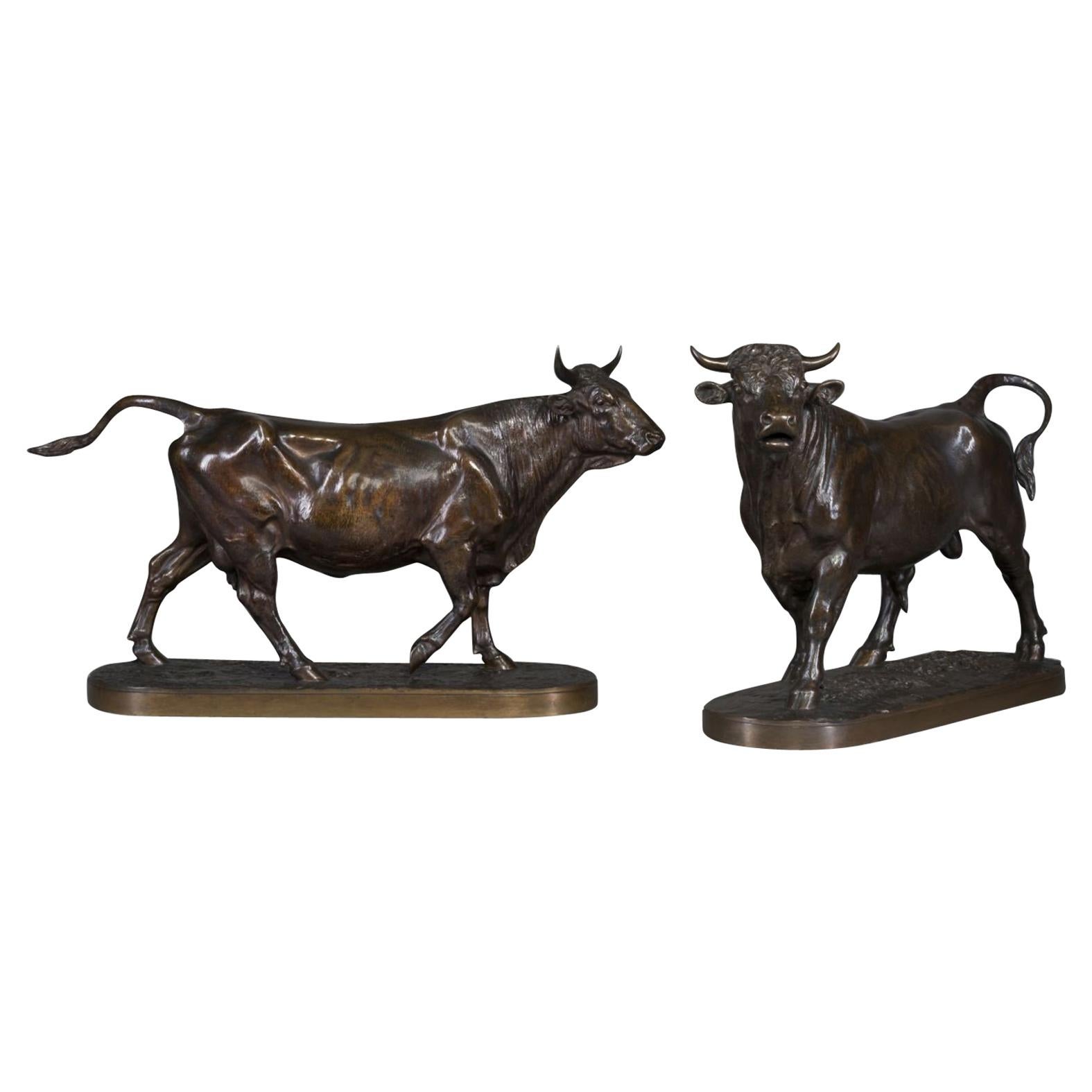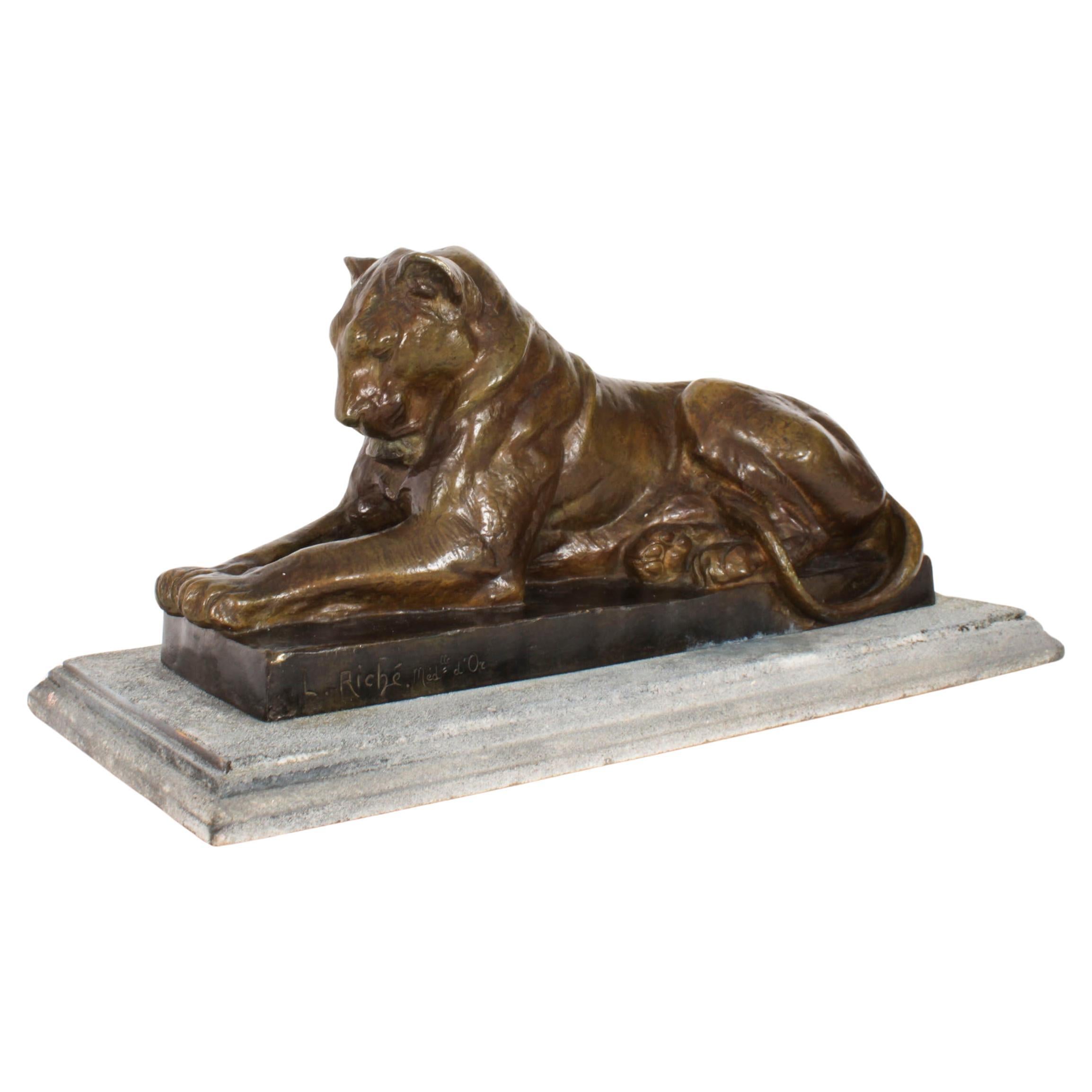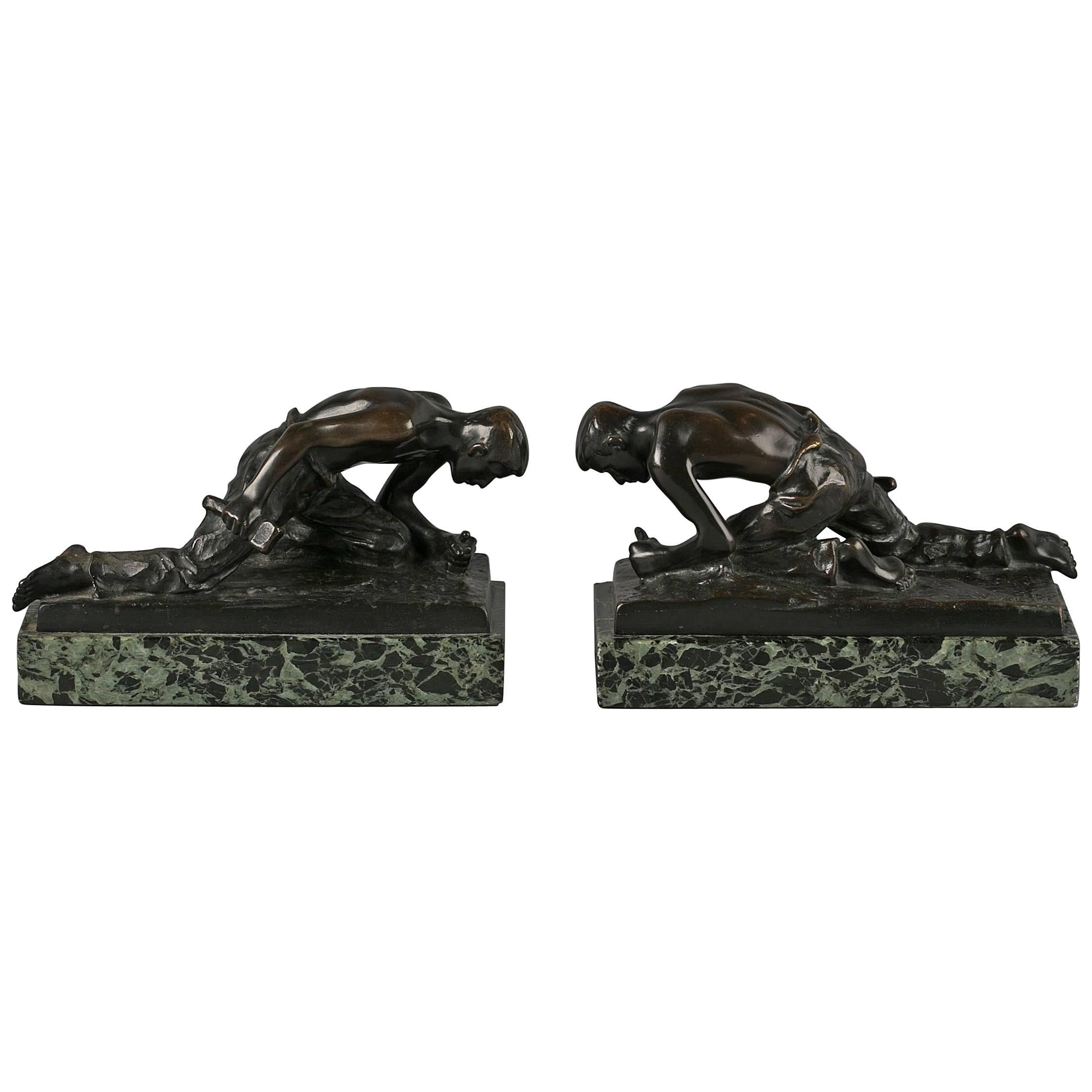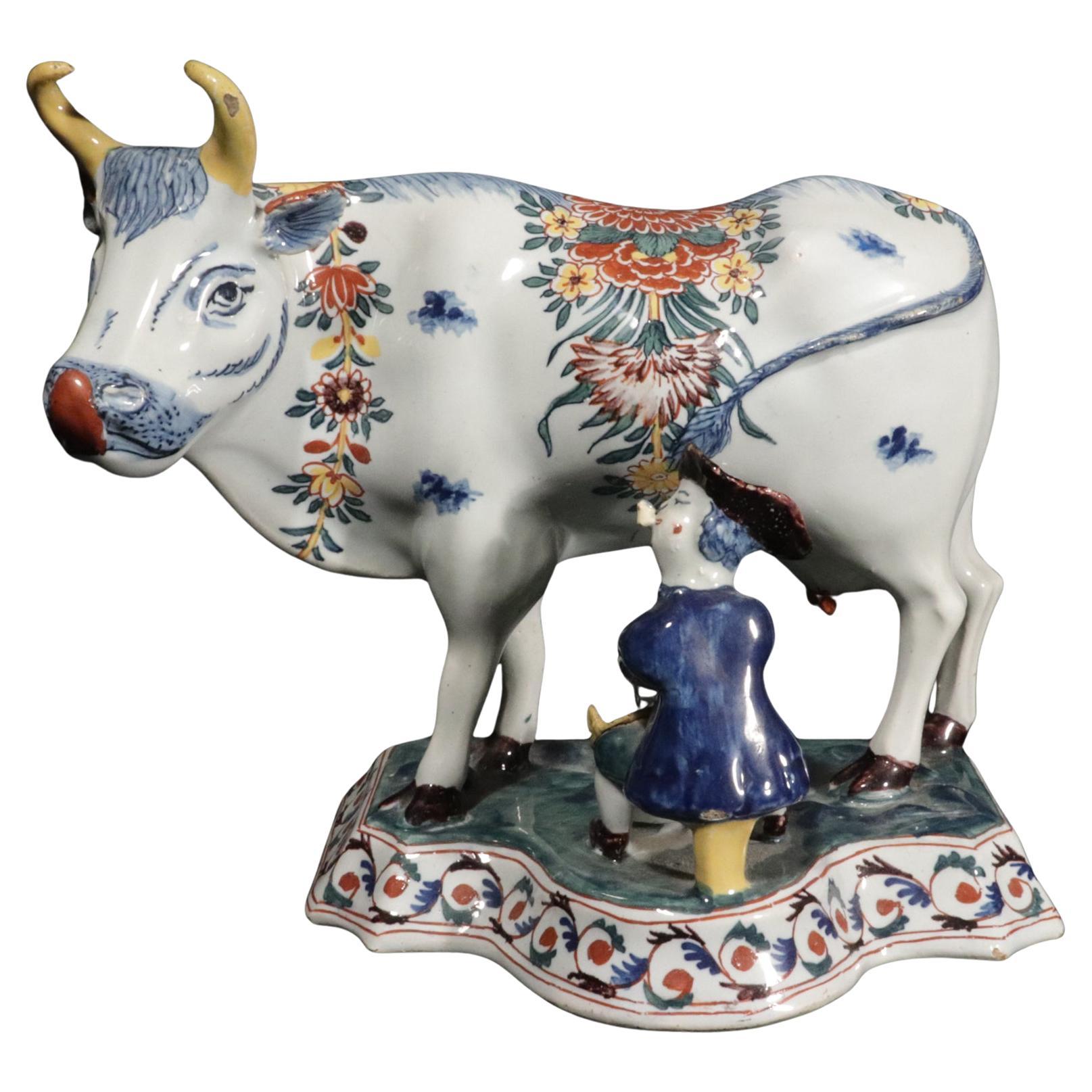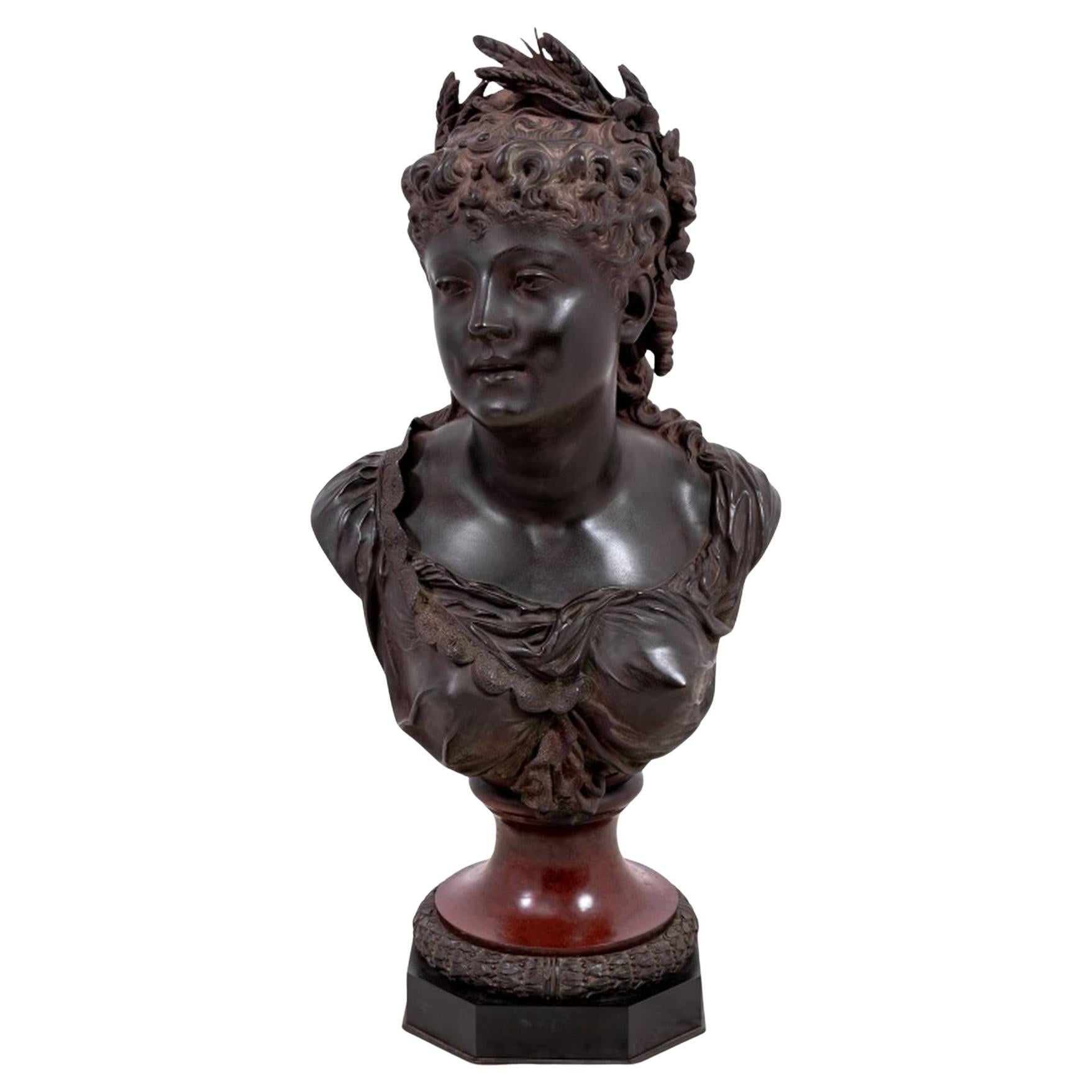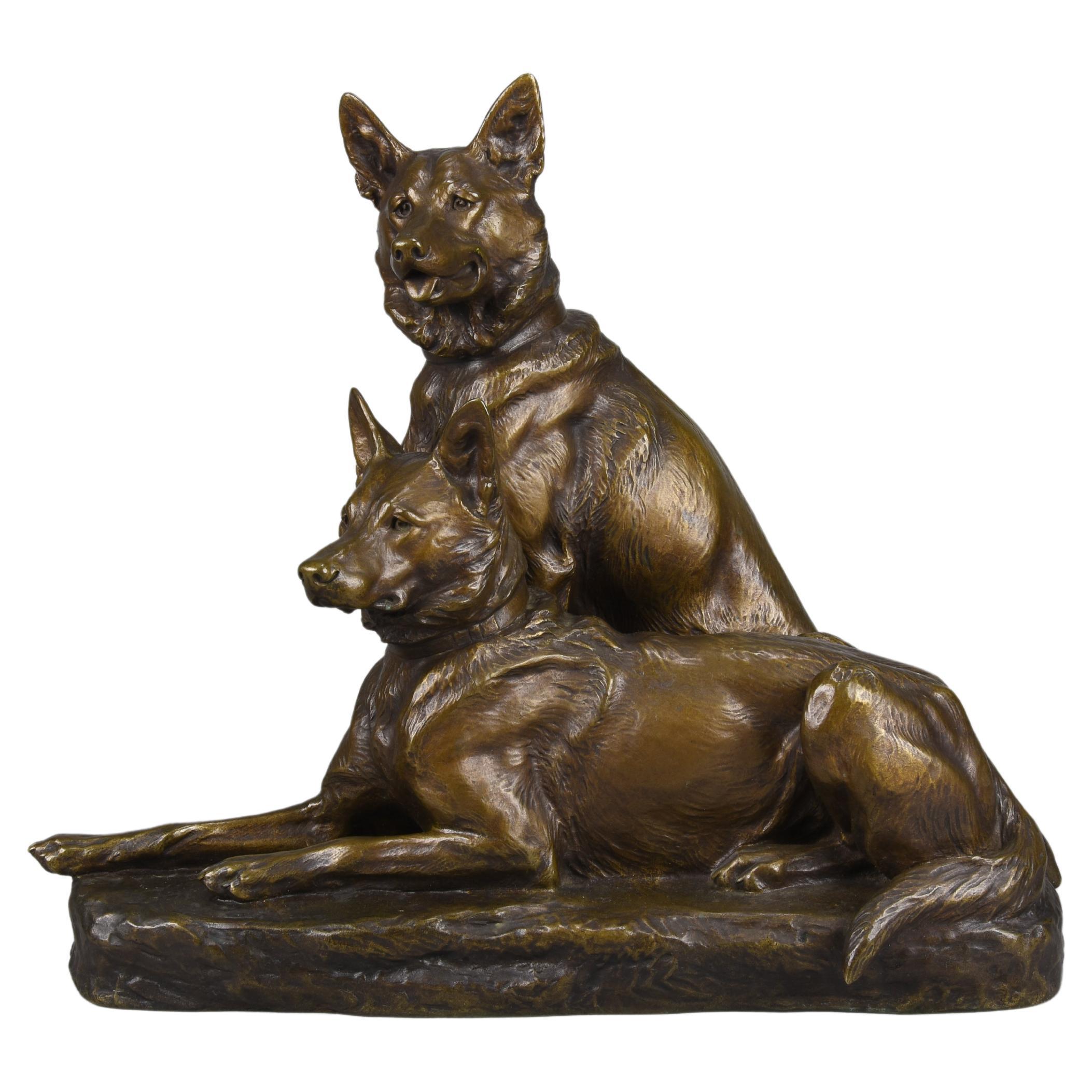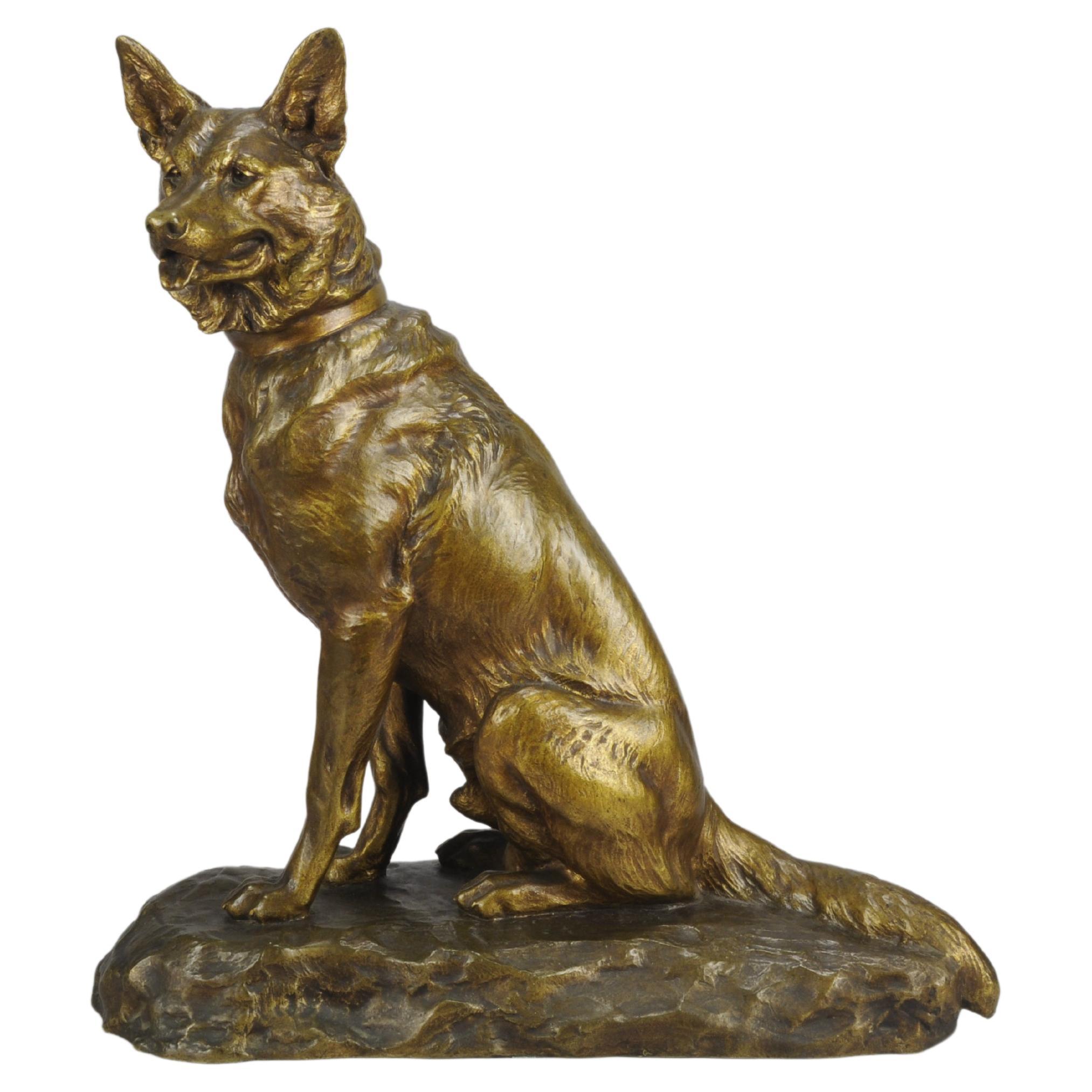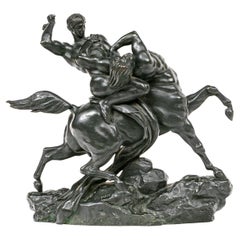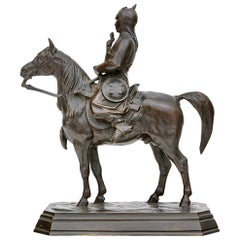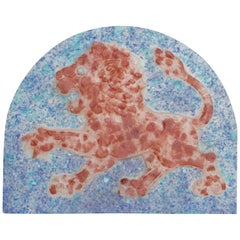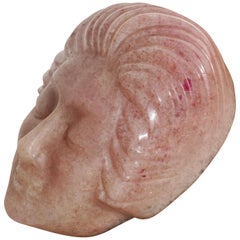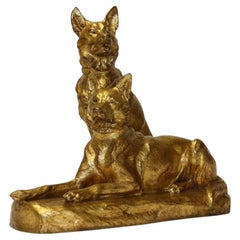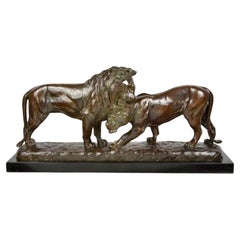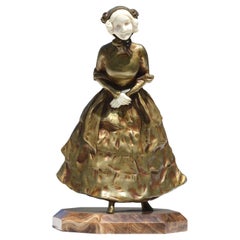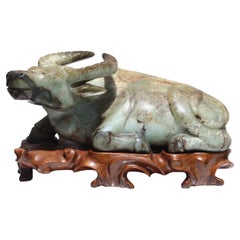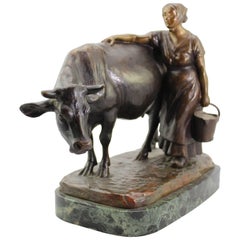
Louis Riche Bronze of a Cow and Milking Woman, circa 1910
View Similar Items
Want more images or videos?
Request additional images or videos from the seller
1 of 6
Louis Riche Bronze of a Cow and Milking Woman, circa 1910
Price:$1,500
$2,200List Price
About the Item
- Creator:Louis Riché 2 (Sculptor)
- Dimensions:Height: 11 in (27.94 cm)Width: 14 in (35.56 cm)Depth: 7 in (17.78 cm)
- Style:Beaux Arts (Of the Period)
- Materials and Techniques:Bronze,Cast
- Place of Origin:
- Period:1910-1919
- Date of Manufacture:circa 1910
- Condition:Wear consistent with age and use.
- Seller Location:Dallas, TX
- Reference Number:1stDibs: LU177425042043
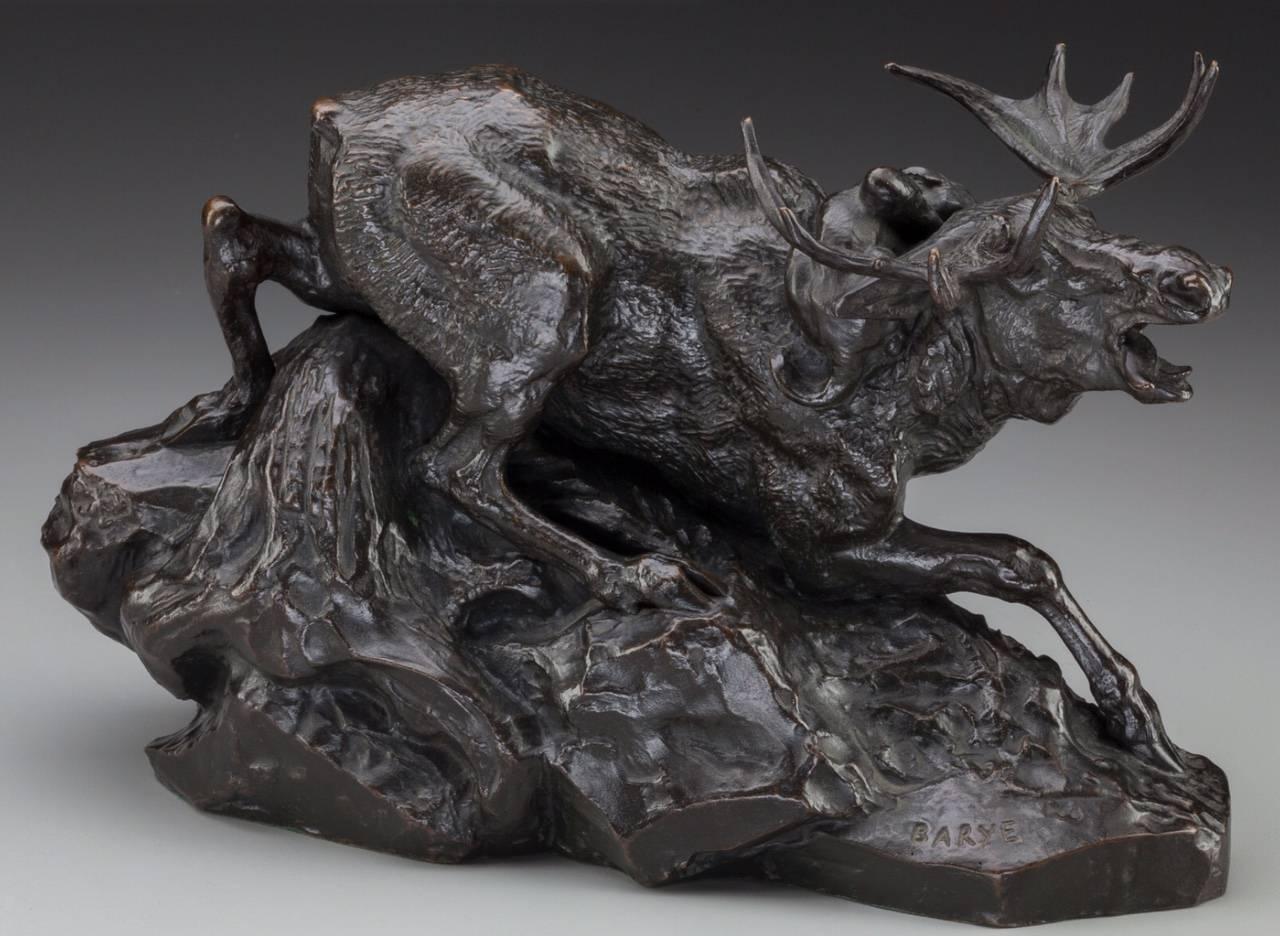
About the Seller
4.9
Gold Seller
Premium sellers maintaining a 4.3+ rating and 24-hour response times
Established in 2000
1stDibs seller since 2015
444 sales on 1stDibs
Typical response time: 12 hours
Authenticity Guarantee
In the unlikely event there’s an issue with an item’s authenticity, contact us within 1 year for a full refund. DetailsMoney-Back Guarantee
If your item is not as described, is damaged in transit, or does not arrive, contact us within 7 days for a full refund. Details24-Hour Cancellation
You have a 24-hour grace period in which to reconsider your purchase, with no questions asked.Vetted Professional Sellers
Our world-class sellers must adhere to strict standards for service and quality, maintaining the integrity of our listings.Price-Match Guarantee
If you find that a seller listed the same item for a lower price elsewhere, we’ll match it.Trusted Global Delivery
Our best-in-class carrier network provides specialized shipping options worldwide, including custom delivery.More From This Seller
View AllAntoine Louis Barye Theseus Slaying the Centaur Bienor Bronze
By Antoine-Louis Barye
Located in Dallas, TX
Antoine Louis Barye Theseus Slaying the Centaur Bienor Black Patinated Bronze Group.
A French bronze group entitled 'Thesee combattant le centaure Bienor, esquisse' (Theseus slaying...
Category
Antique 1850s French Beaux Arts Figurative Sculptures
Materials
Bronze
Antoine-Louis Barye (French, 1796-1875) Guerrier du Caucase Bronze Figure
By Antoine-Louis Barye
Located in Dallas, TX
Antoine-Louis Barye (French, 1796-1875) "Guerrier du Caucase" cast bronze sculpture depicting a Caucasian warrior in full armor rendered in fine detail riding on his horse.
Cast ci...
Category
Antique 1870s French Beaux Arts Figurative Sculptures
Materials
Bronze
Henri Cros Pate De Verre Rampant Lion Large Plaque, circa 1910
By Henri Cros
Located in Dallas, TX
Another rare pate de verre item by Henri Cros in collaboration with his son Jean Cros. A very nice size at 10.75 Inches by 8.65 Inches. translucent; this plaque can be lit up from be...
Category
Vintage 1910s French Art Nouveau Animal Sculptures
Materials
Art Glass
Francoise Emile Decorchemont Pate De Verre Mold of a Woman’s Face
By Francois Decorchemont
Located in Dallas, TX
François-Emile Decorchemont Pate-de-Verre Glass Mold Of A Female Ladies Face. A rare, large and very heavy sculpture of either a mask or a modeled face. At 3.5 inches thick in glass with a peach, pink or rose color; this statue was exhibited in the Brooklyn Museum, New York in 1971. With much research; I haven’t seen or heard of a similar form by Decorchemont. The original Brooklyn Museum loan sticker is on verso with the Decorchemont stamp on her left cheek. For serious collectors or rare Art Deco, Art Nouveau glass.
Circa 1910
Molded Signature DECORCHEMONT
Height: 7 Inches (13.3 cm)
Width:. 5.2 Inches (16.5cm).
AVANTIQUES is dedicated to providing an exclusive curated collection of Fine Arts, Paintings, Bronzes, Asian treasures, Art Glass and Antiques. Our inventory represents time-tested investment quality items with everlasting decorative beauty. We look forward to your business and appreciate any reasonable offers. All of our curated items are vetted and guaranteed authentic and as described. Avantiques only deals in original antiques and never reproductions. We stand behind our treasures with a full money back return if the items are not as described.
François-Emile Décorchemont French, 1880-1997
François Décorchemont, originally an accomplished painter and potter of recognized ability, turned to the making of glass in 1904. Pâté de verre was the medium in which he excelled and for which he is best known. After studying decorative art in Paris, François Décorchemont returned to his native Conches in 1910 to develop new techniques in stained glass, particularly in the use of crystal to give multicolored and faceted panes. After 1909, while continuing to produce fine glass paste pieces, Francois Decorchemont began to experiment with a new casting technique. François Decorchemont, Emile's son and also an artist, helped out in his father’s studio, in particular helping him to research the possibilities of creating jeweled adornments in pates d'email (enamel pastes) for Gerome's polychrome sculptural creations.
Francois Décorchemont, a potter and painter at the outset of his career, became fascinated with the IDEA of developing and utilizing a thin translucent glass material in his work. It was in essence the revival and an adaptation of a long forgotten Egyptian glass-making process using colored crystal powdered glass, metallic oxides and an adhesive paste. This "new" material, known as pâte de verre was developed around the turn of the century, principally at the Sevres porcelain factory, by a number of artists working there, notably Henri Cros and Albert Dammouse.
The end of the 19th century was an illuminated period in the history of art. Impressionist painting appeared and created an interest in glass as material. Traditional sculpting materials such as bronze and marble made way for glass with its possibilities of light and color. Henry Cros and François Décorchemont became the leaders of French pâte de verre and facilitated the proliferation of this colorful glass. His first major work, in 1934, was inn the Eglise Sainte-Odile near Porte Champerret in Paris, some 300 square meters of brilliant colors. After the war, he devoted his work to churches in the Eure, including of course Beuzeville where, thanks to the generosity of the local council, the church is lit at night so that his work can be admired from outside. During the first half of the 20th century a number of French artists became famous for their work in pâte de verre, and Francois Decorchemont among them. March 2014, 20th Century’s Greatest Art Dealer Felix Marcilhac’s Collection Privee at Sotheby’s - Chang Yi Entrusts Antoine Leperlier in the Bidding of a Francois Decorchemon's Original. It has been reported that Felix Marcilhac’s Collection Privee auction at Sotheby’s brought in 33,125 Euros (28,000 RMB), three times the estimated price. Marcilhac is considered the greatest Art Deco dealer...
Category
Vintage 1910s French Art Deco Figurative Sculptures
Materials
Art Glass
Japanese Meiji Genryusai Seiya Bronze Elephant and Tigers
Located in Dallas, TX
Japanese Meiji Genryusai Seiya bronze elephant and tigers, circa 1890.
This moving and detailed bronze grouping depicts a savage attack by two viscous...
Category
Antique 1890s Japanese Meiji Animal Sculptures
Materials
Bronze
Ayutthaya Lacquered And Gilt Bronze Buddha Head 15th Century
Located in Dallas, TX
Ayutthaya Lacquered and Gilt Copper Bronze Buddha Head
Circa 15th Century
A beautifully lacquered and gilt bronze Buddha head from the Kingdom of Ayutthaya, Thailand, circa 15th ...
Category
Antique 15th Century and Earlier Thai Ming Figurative Sculptures
Materials
Bronze
You May Also Like
French Gilt Bronze Study of Two German Shepherd Dogs by Louis Riche, circa 1910
By Louis Riché
Located in Central England, GB
A Fine French Gilt Bronze Study of Two German Shepherd Dogs by Louis Riche
This impressive bronze is finely detailed. It portrays two w...
Category
20th Century French Animal Sculptures
Materials
Bronze
Louis Riche, Bronze Study of Lions
By Louis Riché
Located in Brighton, Sussex
A very good quality late 19th-early 20th century Bronze study of a male lion and lioness,
Signed; L. Riche, French, 1877-1949.
Category
Antique 19th Century French Animal Sculptures
Materials
Bronze
Bronze and Carved Figure of a Maiden, circa 1910
Located in West Palm Beach, FL
A bronze and carved figure of a maiden, circa 1910
Measures: Height 8.75 in. (22.22 cm.),
Width 5.25 in. (13.33 cm.),
Depth 5.25 in. (13.33 cm.).
Category
Vintage 1910s Figurative Sculptures
Materials
Bronze
Bronze and Carved Figure of a Maiden, circa 1910
Located in West Palm Beach, FL
A bronze and carved figure of a maiden, circa 1910
Measures: Height 8.75 in. (22.22 cm.),
Width 5.25 in. (13.33 cm.),
Depth 5.25 in. (13.33 cm.).
Category
20th Century Animal Sculptures
Materials
Bronze
Animalier Gilt Bronze Study entitled "Seated Alsatian" by Louis Riché
By Louis Riché
Located in London, GB
A striking French Animalier gilt and patinated bronze study of a seated Alsatian in alert pose with head turned slightly and ears pricked. The surface with excellent naturalistic detail and very fine colour, signed L.Riché and stamped with foundry seal for Thiebaut Frères
ADDITIONAL INFORMATION
Height: 50 cm
Width: 46 cm
Condition: Excellent Original Condition
Foundry: Thiebaut Frères
Circa: 1910
Materials: Bronze
SKU: 7528
ABOUT
Louis Riché Bronze...
Category
Early 20th Century French Art Deco Animal Sculptures
Materials
Bronze
Pair of Bronze Models of a Standing Bull and a Running Cow, circa 1890
By Isidore Jules Bonheur, Francois Auguste Hippolyte Peyrol 1
Located in Brighton, West Sussex
A pair of large and finely patinated bronze models of a standing bull and a running cow after models by Isidor-Jules Bonheur, Cast on a Naturalistic Base.
French, circa 1890.
Signed 'I BONHEUR' and stamped 'PEYROL EDITEUR'.
Bonheur was a regular exhibitor at the Paris Salon and his naturalistic depiction of farm animals, including cattle, was one of his most popular subjects. The bronze was cast by his brother-in-law, Hippolyte Peyrol, who ran one of the most successful art foundries in Paris at this time.
Isidore-Jules Bonheur (1827-1901) was the son of the painter Raymond Bonheur and younger brother of Rosa Bonheur, the famous sculptor. He was born in Bordeaux and studied painting, at first with his father and then with the Ecole des Beaux Arts in Paris, moving on to sculpture in 1848.
He made his debut at the Paris Salon in 1848 with a painting and plaster study of the same subject ‘African horseman attacked by a lioness’. From then onwards, Bonheur exhibited regularly at the Salon as well as other exhibitions, winning medals in 1865 and 1869 together with the prized Gold Medal at the Exposition Universelle of 1889.
He was awarded the Legion d’Honneur in 1895.
Most of Bonheur’s casts were by his uncle by marriage, Hippolyte Peyrol, whose tiny foundry mark is often very difficult to find.
Bonheur’s studies range from farm animals, bears and tigers in a very naturalistic vein to equestrian groups. Although noted primarily for his small groups he did complete two large scale commissions, one to his sister Rosa, at Fontainbleau and the other, two stone lions at the steps of the Royal...
Category
Antique Late 19th Century French Animal Sculptures
Materials
Bronze
